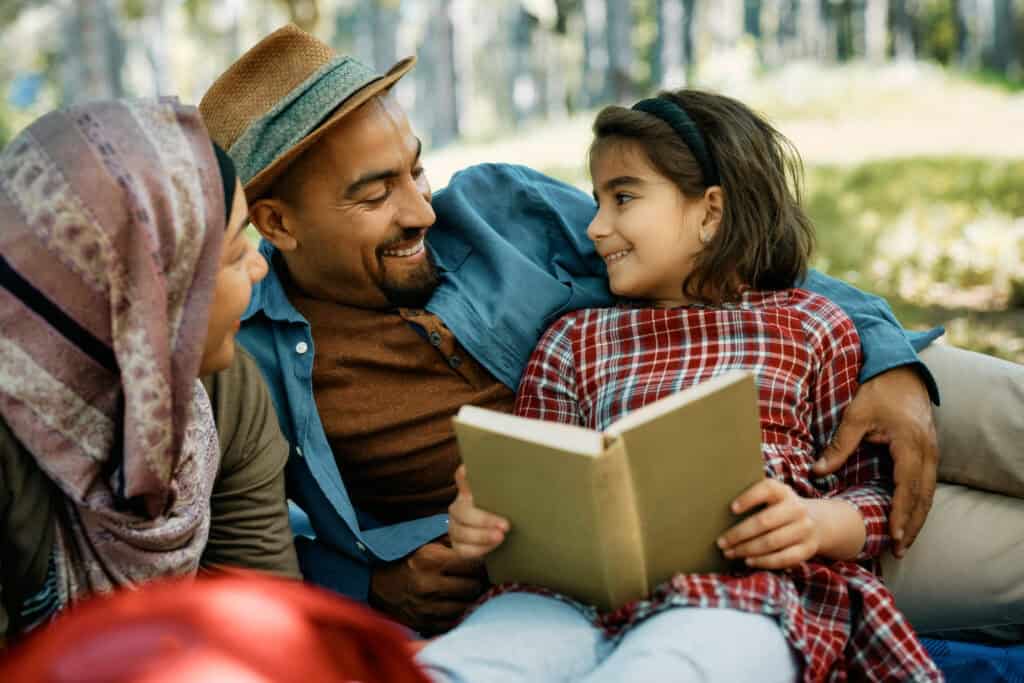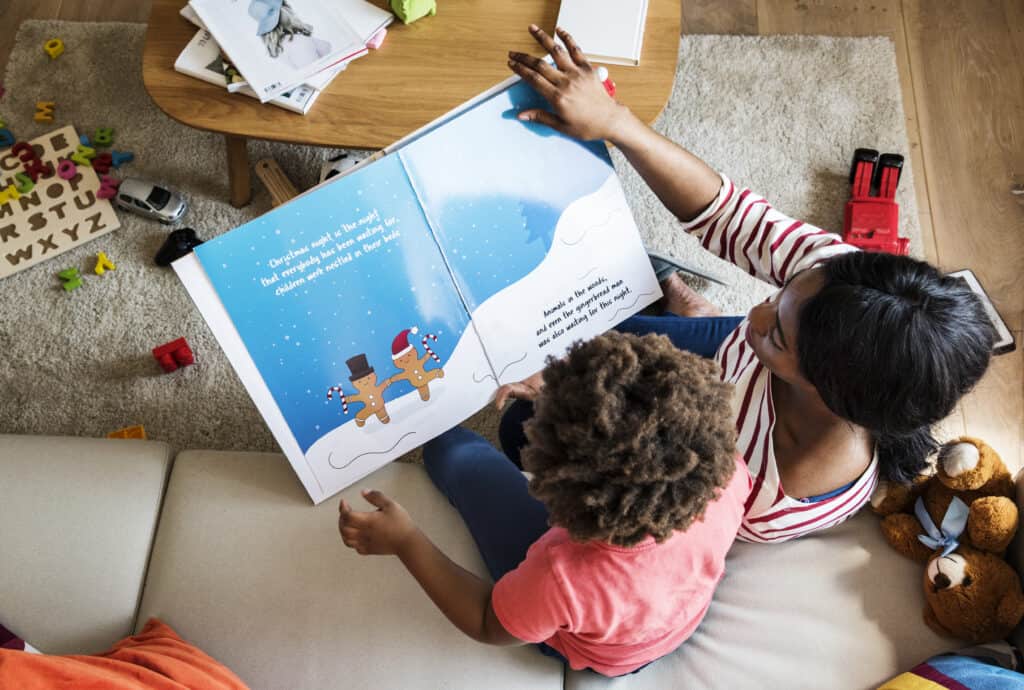Have you ever stood in a bookstore or library, staring at rows of colourful children’s books, wondering which one will actually engage your child?
You’re not alone. With thousands of titles available, selecting the right book can feel overwhelming—but with a little guidance, choosing stories that captivate and support your child’s growth becomes joyful and intentional.
Nowadays, with endless entertainment options, getting your child to fall in love with reading may feel like a challenge. Yet, the right book—at the right time—can spark a lifelong passion for stories, imagination, and learning. Selecting those books isn’t about picking bestsellers or sticking to classics. It’s about understanding your child’s developmental stage, personality, and interests.
Neuroscience Insight
Research in early childhood development shows that reading activates key areas of the brain responsible for language, imagination, and emotional processing. When children are engaged with books that match their interests and developmental stage, their brains form new neural pathways that enhance comprehension, empathy, and long-term memory formation.
In particular, the prefrontal cortex (associated with decision-making and emotional regulation) and the temporal lobes (linked to language processing) are stimulated during story time. Children who regularly read age-appropriate books also develop larger vocabularies and more advanced narrative skills—crucial foundations for academic and social success (1).

Why Book Selection Matters
Children’s brains are highly sensitive to language-rich environments. Engaging with books that are age-appropriate and emotionally resonant boosts vocabulary, attention span, memory, and emotional development.
Beyond brain development, the right books help children feel seen. To support your child’s emotional development alongside book selection, explore how parents can foster emotional resilience in themselves and their children.
When a child reads about a character who shares their fears, dreams, or quirks, they develop a deeper sense of identity and empathy.
What Makes a “Right” Book?
Developmentally Appropriate Content
Books should align with a child’s cognitive and emotional maturity. For example:
- Infants and toddlers need bright visuals, rhythmic patterns, and sensory experiences.
- Preschoolers respond well to repetition, humour, and simple narratives.
- Early readers (ages 5–7) enjoy stories with relatable characters, clear plots, and emotional lessons.
- Older children prefer complexity—chapter books, fantasy, mysteries, or real-world adventures.
Books that are mismatched in complexity or theme may bore, confuse, or even upset a child, so consider their current level—not just their age (3). Books can also be powerful tools for helping children process emotional or behavioural challenges, as explored in our article on understanding challenging behaviours.

Alignment With Interests
Does your child talk about dinosaurs nonstop? Are they fascinated by outer space or silly jokes? Use their current obsessions to guide book choices. Interest-based reading builds motivation and focus, leading to longer engagement and stronger reading skills.
Children are more likely to enjoy reading when they feel ownership of the selection. Let them explore covers, titles, and even flip through pages. This autonomy boosts confidence and enthusiasm (4).
PAUSE AND REFLECT
Think back to your favourite childhood book. Was it the humour, the adventure, or the pictures that captured your heart?
What drew you in then might help you understand what your child needs now.
Cultural and Emotional Relevance
Books that reflect a child’s background—or expose them to other cultures—support social-emotional learning and empathy. In many cultures, storytelling is a sacred act passed through generations. In Japan, Kamishibai (paper theater) combines art and oral narration. In Indigenous communities, storytelling preserves identity and ancestral knowledge.
By selecting books that reflect diversity in culture, language, family structure, and ability, you give your child a mirror of their own life—and windows into others’ experiences. Reading books that highlight diverse voices also builds cross-cultural empathy, helping children connect with experiences beyond their own.
Literary and Visual Quality
Watch for:
- Clear, expressive illustrations that support the story
- Strong language with rhythm, richness, and clarity
- Positive themes like kindness, curiosity, or resilience
- Well-edited content free from errors or inappropriate messages
Unfortunately, not all children’s books meet these standards. A 2023 study analysing 60 top-selling preschool books found frequent issues in grammar, translation, and image-text mismatch—highlighting the need for careful screening (2).

A Quick Checklist for Parents
- Is the language age-appropriate and engaging?
- Do the illustrations support or enhance the story?
- Does the theme resonate with your child’s interests or emotions?
- Are diverse perspectives and characters represented?
- Is your child excited to read it again?
Cultural Connection
Around the world, the way we share stories with children reflects deep values and traditions:
In Kenya, grandparents gather children around evening fires, weaving oral stories rich in wisdom and morals—fostering attention, listening skills, and imagination.
In Japan, Kamishibai (paper theater) combines visual art and storytelling, encouraging empathy and cultural pride.
In Scandinavia, curated book boxes—tailored to developmental stages—are distributed to families, emphasising reading as a communal responsibility and a right.
These diverse practices show us that storytelling isn’t just about entertainment—it’s a universal way of shaping identity, building bonds, and passing down values.
Free Resources for Parents
Explore our collection of free resources, including story dice, printable guides, conversation starters, and more—designed to help you deepen connection, build emotional resilience, and embrace mindful parenting.
Sign up for our newsletter and get access to our Freebies Library to explore tools that support your parenting journey.
Final Thoughts
Choosing the right books for your child isn’t about finding the “perfect” title. It’s about tuning in—to their development, their feelings, and their joy.
With the right stories in their hands, children not only become better readers—they become better thinkers, dreamers, and humans. Story structures like the Hero’s Journey can support identity formation and resilience—especially when embedded in emotionally resonant books. Learn more in our piece on the Hero’s Journey for children.

Reflect
Know another parent or educator looking to inspire young readers?
Pass this guide along and help grow a new generation of book lovers.
References:
- Dwyer, J., & Neuman, S. B. (2008). Selecting Books for Children Birth Through Four: A Developmental Approach. Early Childhood Education Journal, 35(6), 489–494. https://doi.org/10.1007/s10643-008-0236-5
- Ateş, N.T. (2023). An Evaluation of Preschool Children’s Books with Respect to the Principle of Appropriateness for Children. Research on Education and Psychology. Vol. 7(2), 242-269. http://dergipark.org.tr/rep
- Cer, E. (2016). Preparing Books for Children from Birth to Age Six: The Approach of Appropriateness for the Child. Journal of Education and Practice. https://www.iiste.org/Journals/index.php/JEP/article/view/29097#google_vignette
- Chung, J. (2011). A study on children’s book selection behavior. Journal of the Korean Society for Library and Information Science, 45(1), 417–437. https://doi.org/10.4275/kslis.2011.45.1.417
This piece was written for you by
Making complex ideas accessible and sparking meaningful conversations.
